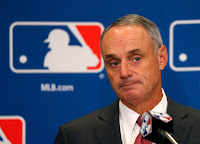The Hall of Fame Should Reverse the Slight to Dick Allen
Despite a career average of .292, 351 total home runs, 1,119 total RBIs, the 1964 NL Rookie of the Year award, seven All-Star appearances, and the 1972 AL MVP award, during his fifteen years of eligibility of 1982 through 1997, Dick Allen never garnered more than 20% of the vote from the BBWAA for Hall of Fame induction. The oft-cited reason for this has been the character issue. Baseball writers viewed Allen as a divisive figure in the clubhouse. Bill James has accused Allen of “manipulat[ing] racism as an explosive to blow his teams apart.” But far from manipulating racism, Allen was a victim of racism, who was saddled with an undeserved reputation because of his reactions to regrettable treatment by players and fans alike. Allen broke into the major leagues in Philadelphia, a city Curt Flood described as “[t]he nation’s northernmost southern city.” Philadelphia was infamous for its treatment of Jackie Robinson when he broke the color barrier in 1947. The Philli...

